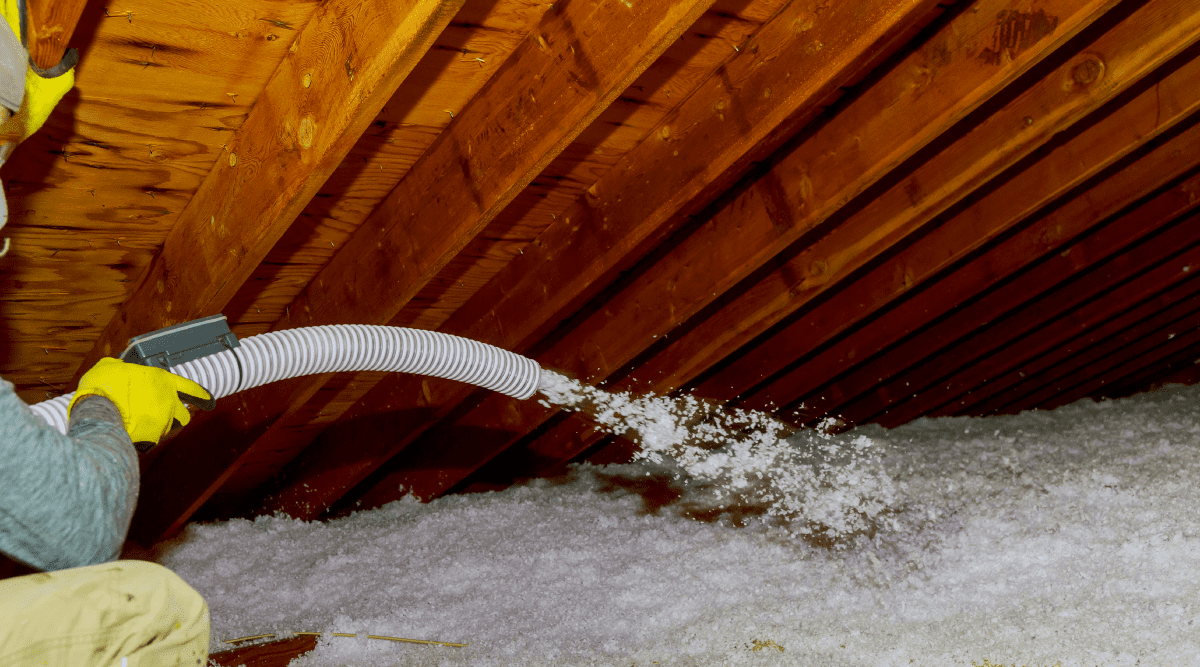An uninsulated attic can add up—for both cost and comfort. Hardwood floors may be on trend, but they don’t do anything to keep your house warm in the winter or cool in the summer. Learn how to blow insulation in your attic so you can lower your energy bill and control climate:
Why Choose Blown-In Attic Insulation:
Attics with irregular joist spacing, low ceilings and/or obstructions are perfect candidates for blown-in insulation. If your attic already has batt insulation—the kind that comes in rolls— blown-in insulation can be used as a topper.
With patience and preparation, do-it-yourself, blown-in insulation can be effective and inexpensive.
How to Blow Insulation in Attic
Step 1: Gather safety attire and equipment
- Wear a dust mask, goggles, work gloves, long sleeves and pants.
- Use a piece of plywood spanning at least three joists to stand on.
- Illuminate dark areas of the attic with lanterns or clip-on lights.
Step 2: Set your space
- Seal all air gaps in your attic. Use spray foam for large gaps and caulk for small spaces.
- Wrap water lines in pipe sleeves. If you notice any water damage, contact a professional.
- Create a barrier around the furnace vent, ensuring it’s higher than the insulation.
- If you have recessed lights, first make sure they’re Type-IC. Next, build a box around them with a 3-inch clearance.
Step 3: Prepare to insulate
- Map out utilities and lights so you know where they’re located after you install the insulation.
- Install pieces of wood in a few spots around the attic to help guide the overall thickness of the insulation (between 12-15 inches).
- Create a barrier to stop the insulation from going where you don’t want it to, such as the attic opening.
Step 4: Install the blown-in insulation
*This is a 2-person job—enlist help!
- Connect the hose to the machine and add half a bag of fill.
- Start blowing the fill into the area farthest from the hatch/door. Because the fill is light, be careful not to blow away areas you’ve already filled.
Pro-Tip: If you plan on using the attic for storage, you will need to raise the floor up before adding a second layer of insulation.
How Much to Insulate Attic
The cost of attic insulation depends on:
- Type of insulation
- R-value: The “R” stands for the insulation’s resistance to heat flow. A higher R-value means greater insulation.
- Amount needed: This depends on the square footage of your attic, but the insulation should be between 12 and 15 inches thick.
- The person doing it (DIY vs. professional)
Though pricing varies, the national average for blown-in insulation is $1,401.
Need more home improvement ideas? Tackle these rooms next:
